Ranked: Europe's 15 most DANGEROUS attractions
Risky business

Romas_Photo/Shutterstock
From beguilingly beautiful beaches and magnetic mountains that call out to be climbed, to infamous hiking trails fraught with hazards and urban attractions rife with petty criminals, Europe has some incredible but dangerous attractions. We've rounded up some of the riskiest tourist spots around the continent and ranked them for their level of danger. Remember to follow any safety advice, rules and regulations if you visit.
Read on to discover what we believe is Europe's most dangerous attraction.
15. Trevi Fountain, Italy
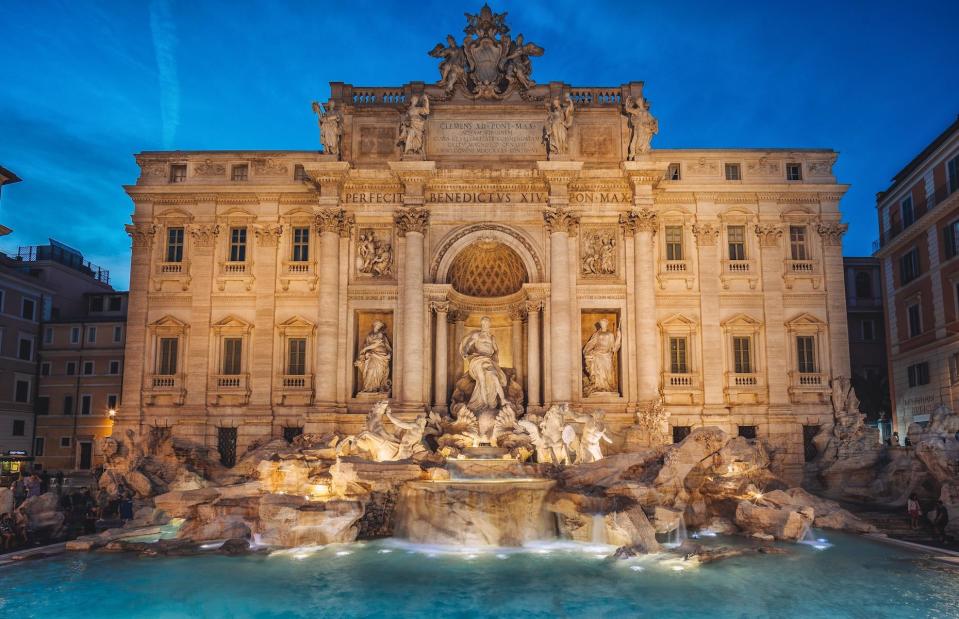
Wirestock Creators/Shutterstock
Everywhere you look in the Eternal City there is another awe-inspiring sight – from incredible Roman structures like the Pantheon and Colosseum to crumbling age-old columns that pepper the city. One of its 'newer' structures is the Trevi Fountain, a lavish water feature built in the 1700s on the site of an ancient Roman aqueduct, Aqua Virgo, with the god Oceanus overseeing it all at its centre.
It’s one of the city’s most iconic monuments, featuring in numerous films and drawing great crowds of tourists during day and night.
15. Trevi Fountain, Italy

Kirill Neiezhmakov/Shutterstock
While unsuspecting tourists are throwing coins into the fountain’s pool (these coins go to Catholic charity, Caritas) they may well be losing a few notes or credit cards of their own. The Trevi Fountain was ranked the place you're most likely to get pickpocketed in Europe in a recent survey.
Two other hotspots for the criminals in Rome were the Colosseum and the Pantheon. There have also been altercations between tourists jostling for a selfie spot and some attempting to get a little too close to the monument.
14. Acropolis, Greece
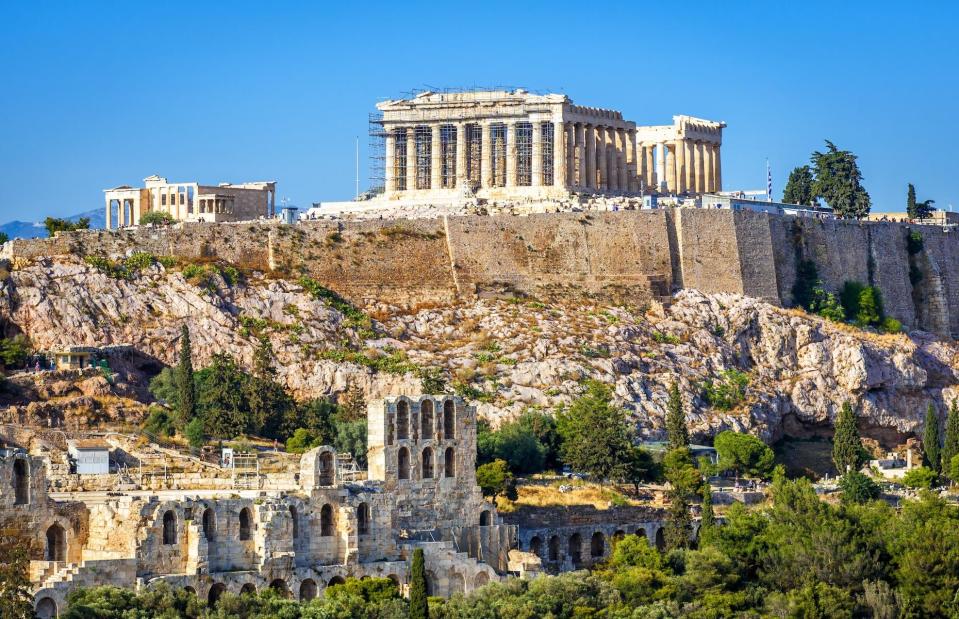
Viacheslav Lopatin/Shutterstock
One of the world’s most impressive and significant archaeological sites, the Acropolis is the crowning glory of a getaway to Athens. As well as its famed marble temples and storied theatres, the limestone crag is home to the nearby much-lauded Acropolis Museum, a veritable treasure trove of classical relics.
However, it pays to plan your visit to this sprawling site carefully to avoid some unpleasant experiences.
14. Acropolis, Greece
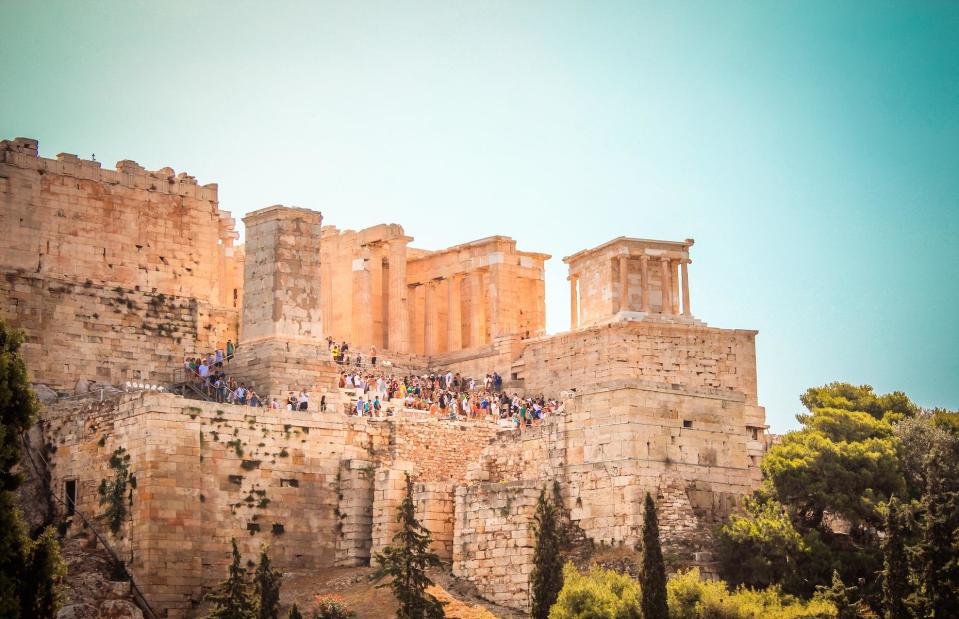
Evgeniya Telennaya/Shutterstock
Overwhelming heat, little shade, high volumes of crowds and uneven terrain can make a visit to the classical marvel a minefield. Athens gets extremely hot in summer and the recent record temperatures across the continent saw authorities close the monument in July 2023, as visitors collapsed and suffered from the effects of heat as the mercury rose to 48°C (118°F).
It’s a different experience altogether in low season, although you’ll still be advised to wear your grippiest shoes and watch where you tread. The attraction has recently capped visitors at 20,000 a day but that's still a lot of people to contend with.
13. Ben Nevis, Scotland, UK
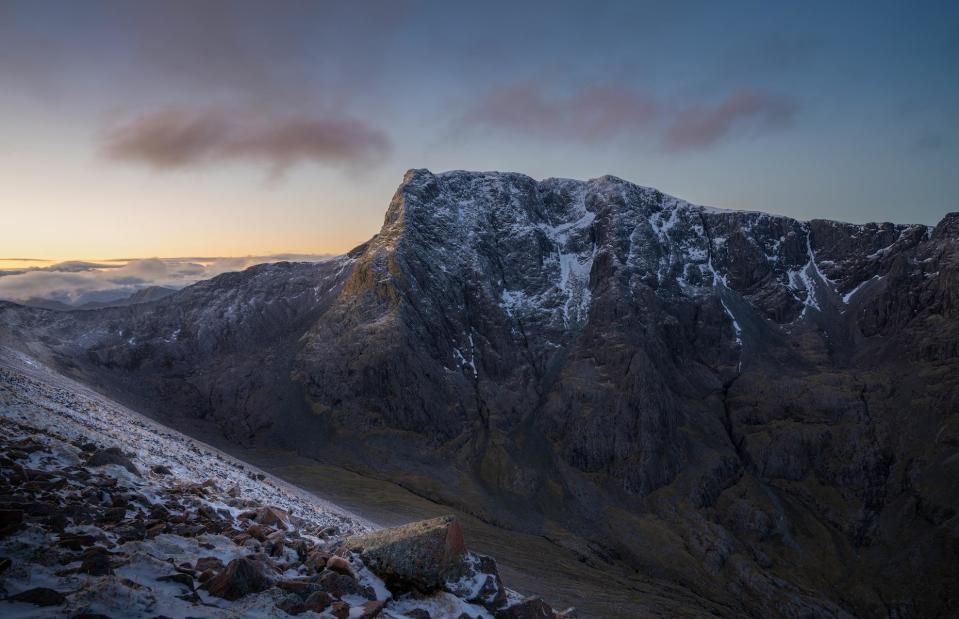
Scotland's scenery/Shutterstock
The most perilous peak in the British Isles, Ben Nevis is a brooding form in the Scottish Highlands that is the pinnacle of mountain climbing for outdoor enthusiasts in the UK. The views from the 4,413-foot (1,345m) giant are incredible, and one reason why up to 150,000 people a year make the attempt to ascend Nevis annually.
Not all are successful, with many accidents – an average of 20 notable accidents annually, plus an average of three fatalities each year. Avalanches, people getting lost in bad weather or falling are all common dangers, as are people attempting to climb via the notorious and often icy North Face.
13. Ben Nevis, Scotland, UK
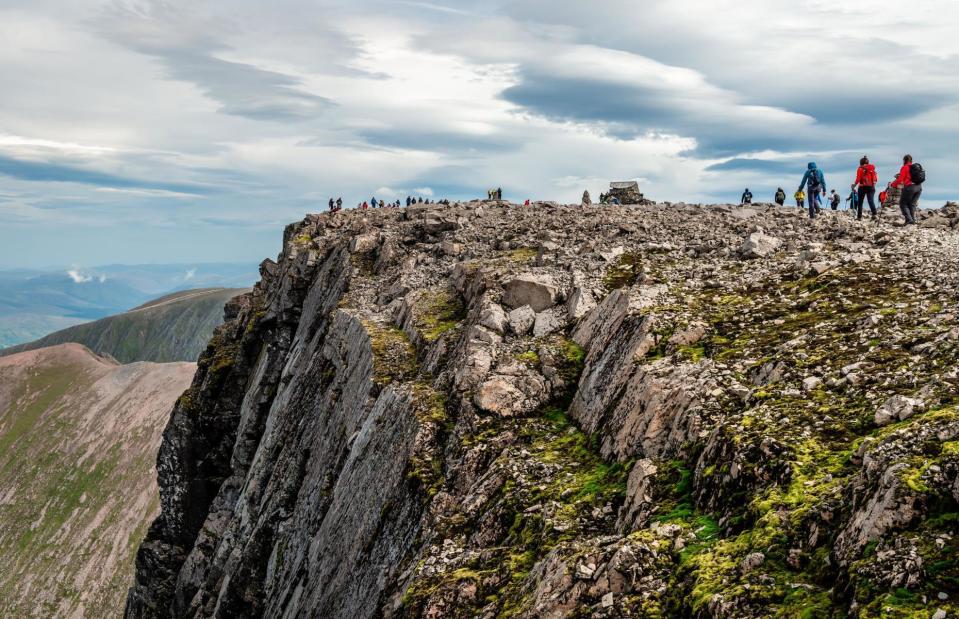
Apostolis Giontzis/Shutterstock
The well-marked Mountain Path is the safest and 'easier' option, but preparation is critical. It’s not just the terrain that causes a problem; the granite peak is prone to sudden changes of weather. What may have started out as the perfect climbing day can soon change as you get higher up, with the upper slopes and summit often cold, wet, windy and covered in snow.
More people are being lured to its slopes each year too, giving rise to more rescues. The Lochaber Rescue Team, which coordinates Nevis rescues, has seen emergency call-outs increasing, with between 80 and 100 rescues per year. It’s not only climbers who come unstuck – rescuers are also called out to help canoeists lost or stuck in the mountain’s out-of-the-way gorges.
12. Mont Saint-Michel Bay, France
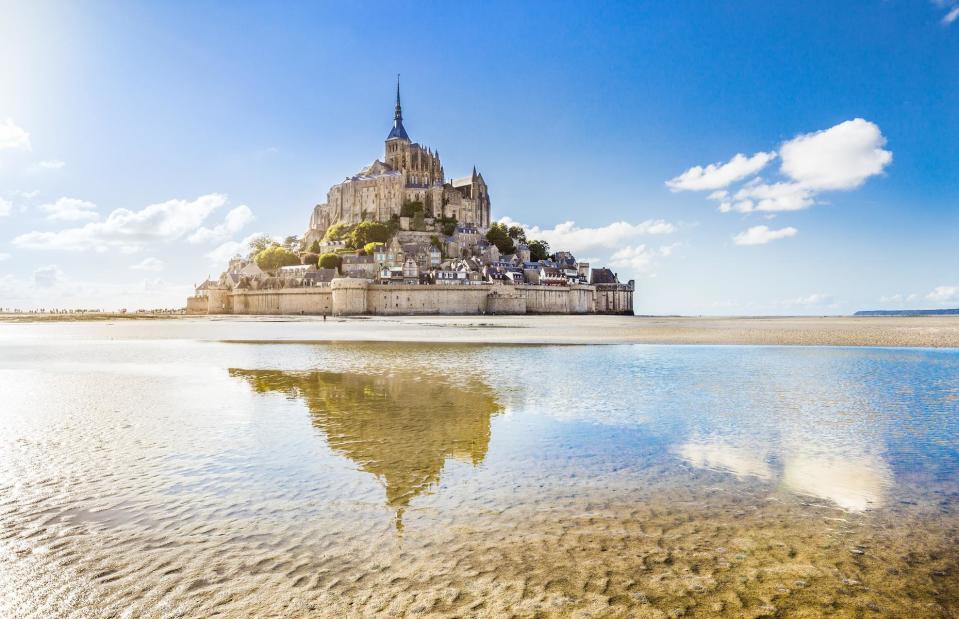
canadastock/Shutterstock
Mont Saint Michel in Normandy is one of France’s most visited tourist attractions – people come in their droves to visit the picturesque rock-top abbey – a UNESCO World Heritage Site – and lose themselves in its tiny alleys and narrow staircases.
A wooden footbridge was built to replace the road that linked the isle to the mainland and now Mont Saint-Michel can be seen how it used to be: surrounded by water when the famously strong tides of Mont Saint-Michel Bay rush in.
12. Mont Saint-Michel Bay, France

SCStock/Shutterstock
As well as its mesmerising medieval citadel, this pretty bay is home to the strongest and highest tides in all of Europe. During high tides, the sea can retreat nine miles (15km) from the coast before rising extremely rapidly. The natural tidal phenomenon takes place twice a day during spring tides and can create a tidal bore – a large wave caused by the constriction of the rising tide as it's funnelled into a narrow channel.
Whirlpools are also common in this treacherous bay. Seen from a distance, the bay’s tides are a marvel, but perilous for anyone caught unawares on the shifting sands. Walking without a guide at any time is ill-advised.
11. The Bolton Strid, England, UK
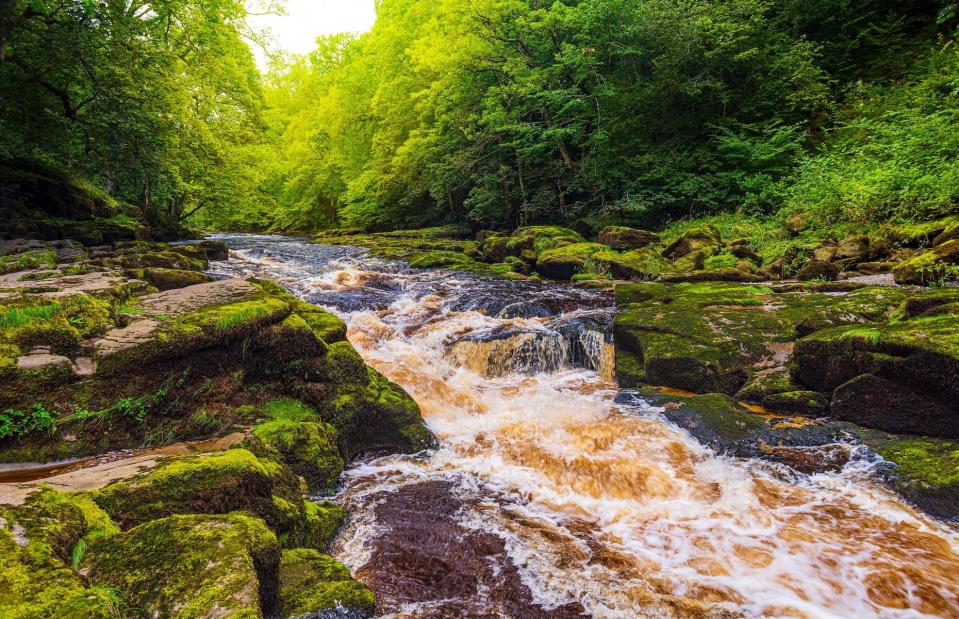
allouphoto/Shutterstock
A burbling stream dancing through sun-dappled ancient woodland is the quintessential accompaniment to a walk in the English countryside, and the grounds of Bolton Abbey more than deliver. Walking trails lead walkers into Strid Woods, one of the largest remnants of sessile oak trees in the Yorkshire Dales, and along the course of the Bolton Strid, whose waters gush past moss-covered boulders.
However, while stunningly pretty, the Bolton Strid isn’t as benign as it seems...
11. The Bolton Strid, England, UK
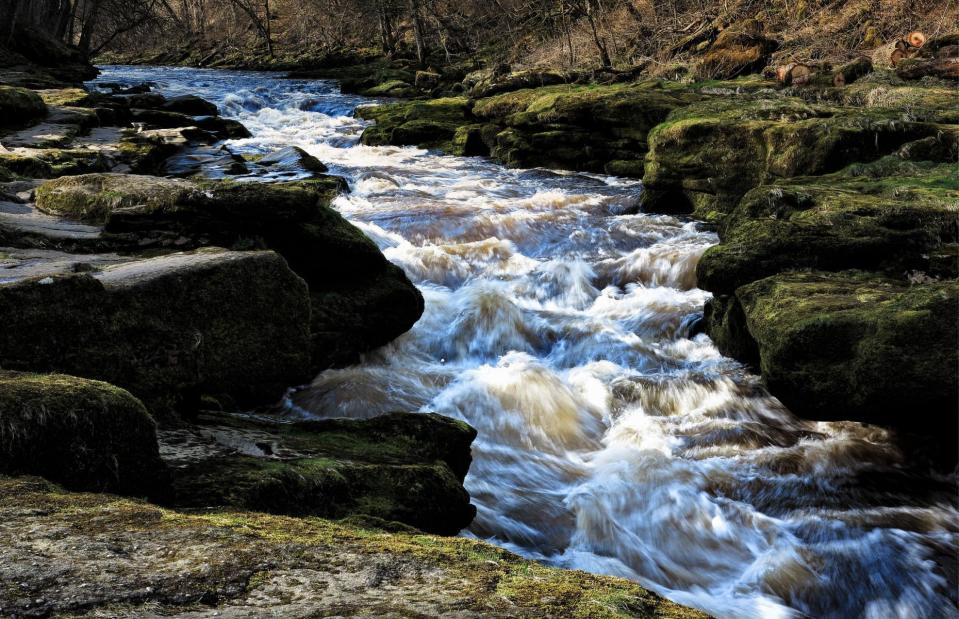
allouphoto/Shutterstock
The Strid is not actually a stream but a section of the River Wharfe that's forced through a narrow channel in this part of its course. With extremely fast-flowing and deep waters, strong undercurrents and frigid temperatures, anyone who slips into these frothing waters from the slippery boulders is in trouble.
There’s good reason it has gained the nickname of ‘England’s killer creek’ after numerous drownings, including the tragic disappearance of a couple out walking on their honeymoon in 1998, who were later discovered miles downstream of the treacherous waterway.
10. Birling Gap and Seven Sisters, England, UK
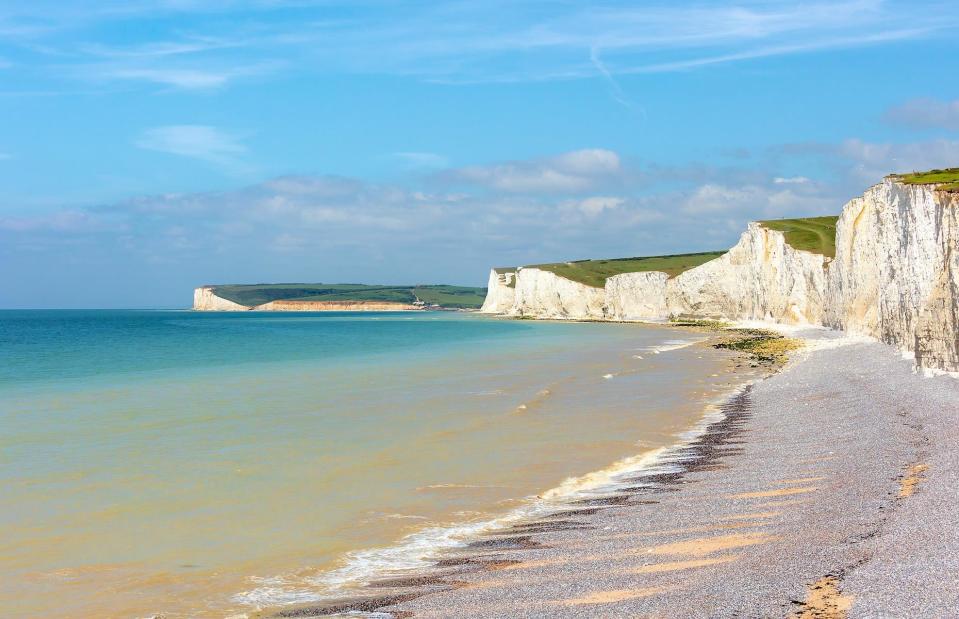
Jackie Matthews/Shutterstock
A striking sight on Britain’s coastline, the bone-white chalk cliffs of the Seven Sisters near Eastbourne are one of the longest untouched stretches of the south coast. Protected by the National Trust, this precious landscape is a hive of activity. People come to peer over the beaches at the coastal hamlet of Birling Gap, hikers strike off into the rolling South Downs and livestock graze on the chalklands.
Gazing up at these soaring sea cliffs from down below is just as impressive – at high tide you can get down onto the beach to go rockpooling or watch the waves crash in. Just don't get too close to the cliffs and keep watch for the incoming tide.
10. Birling Gap and Seven Sisters, England, UK
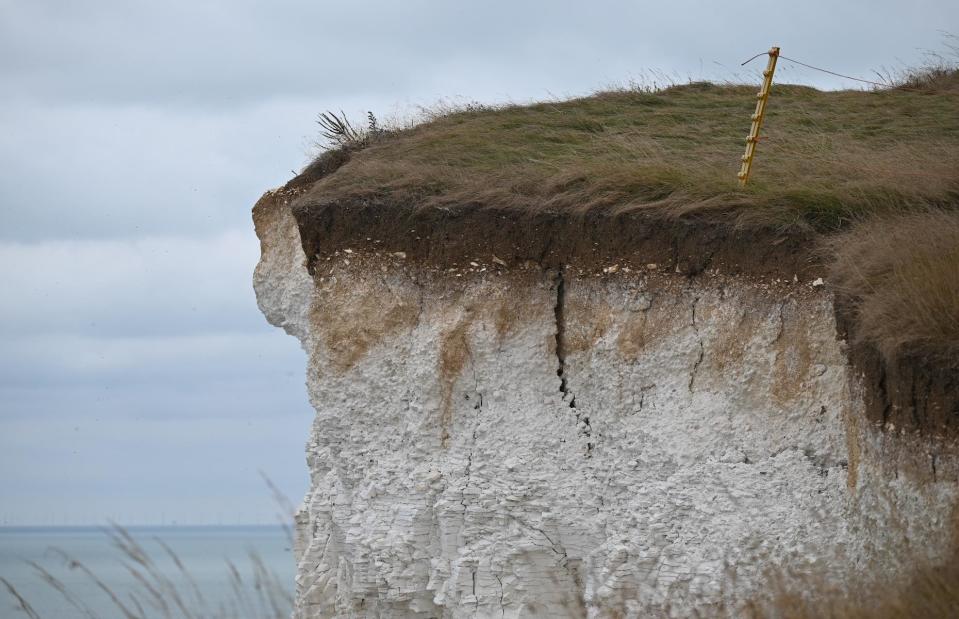
boybehindacamera/Shutterstock
These towering chalk cliffs are extremely unstable and are receding at a rate of around three feet (1m) a year, with huge cracks appearing and rockfalls occurring. Natural erosion is accelerated by wilder seas, rising sea levels and heavy rainfall – when water is soaked into the chalk and freezes, it expands, causing cracks in the cliff and large chunks to break off.
Despite warning signs to keep 16 feet (5m) back from the cliff edges, and areas being roped off, some visitors can get perilously close to these sheer and unstable cliffs when taking photos.
9. Cinque Terre, Italy
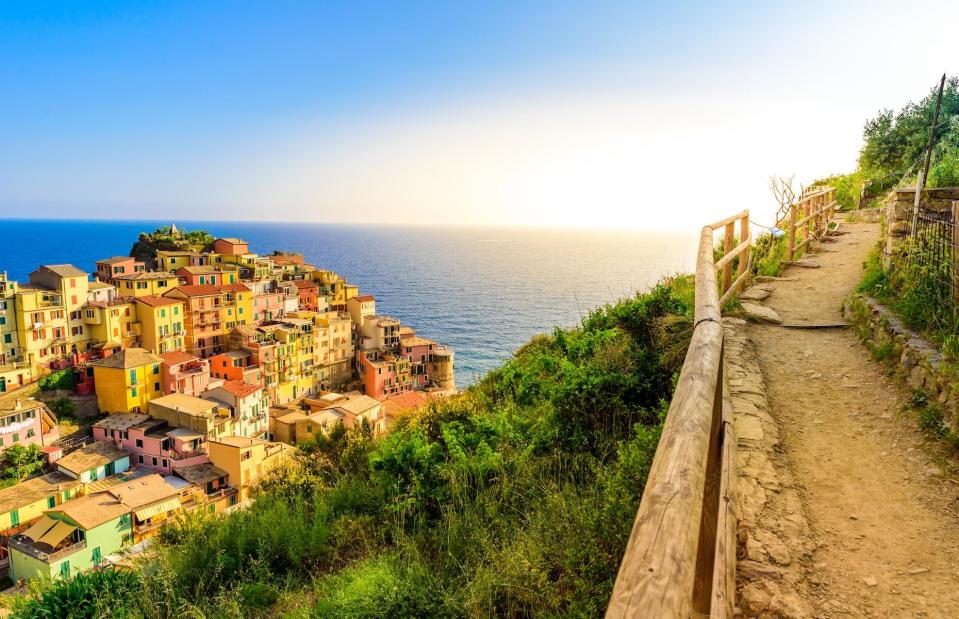
Simon Dannhauer/Shutterstock
With its pastel-hued villages perched on cliffs above the deep, blue sea and steep mountains criss-crossed by walking paths, the Cinque Terre is one of Europe’s prettiest and most popular coastal stretches. Unsurprisingly, these five little villages on the Ligurian coast have become a hotspot for overtourism and the ancient tracks, which were built by workers to link the villages with the area's steep-sloped vineyards, have become hazardous.
Around 2.5 million tourists visit these tiny seaside settlements each year to walk along the famed coastal paths.
9. Cinque Terre, Italy

Tatsuo Nakamura/Shutterstock
As well as suffering from overcrowding and distracted tourists losing their footing on uneven paths, the trails pose a danger as they are prone to landslides and rockfalls and can suffer wave damage. One of the paths, known as Via dell’Amore or Lover’s Lane, which runs between Manarola and Riomaggiore, suffered a major landslide in 2012 and was closed for 12 years before reopening in July 2024.
As part of measures to control tourism in the region, timed slots must be booked in advance for some trails and fines will be issued to tourists walking in flip-flops or sandals.
These are Italy's most beautiful towns and villages
8. El Caminito Del Rey, Spain
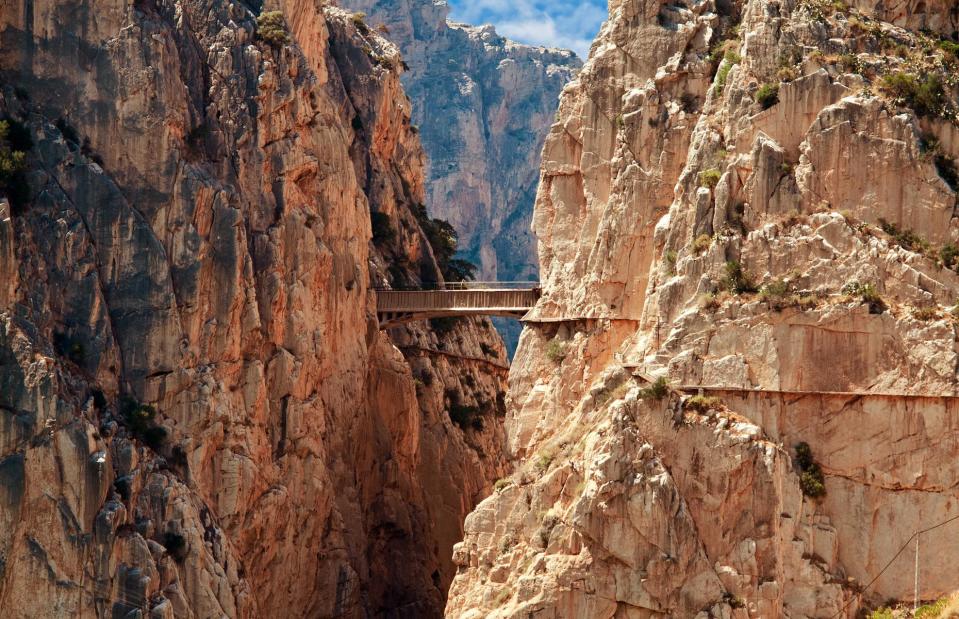
Migel/Shutterstock
El Caminito del Rey (the King’s Little Path) is a vertiginous walkway that clings to the cliffs above El Chorro gorge in the province of Malaga. Construction on the trail, made up of concrete boardwalks pinned to the cliffs, began in 1901 so workers at El Chorro's hydroelectric power station had access to the El Gaitanejo dam.
As well as the narrow cliff-edge walkway, a suspension footbridge was strung across the gorge, soaring over 328 feet (100m) above the Guadalhorce River.
8. El Caminito Del Rey, Spain

Romas_Photo/Shutterstock
After it was no longer in official use by workers the dangerous crossing, nicknamed 'the Walkway of Death', became a magnet for intrepid explorers, with several falling to their deaths while attempting to cross the extremely narrow and basic pathway. It fell into such a severe state of dilapidation that the walkway was closed in 2000 after five fatalities occurred over the course of a year.
Sadly, the deaths continued as four trespassers also suffered a fatal fall after illegally accessing the trail. After years of extensive renovations a new, safer walkway opened in 2015 – though it's still utterly knee-knocking.
7. GR20, Corsica

AdamCh/Shutterstock
The G20 is a revered long-distance trek that unspools for 112 miles (180km) diagonally along Corsica’s jagged mountainous interior, stretching from Calenzana in the north to Conca in the south. Though breathtakingly beautiful, it’s known as the toughest trek in Europe – but that makes it all the more alluring for thrill-seeking hikers.
Along with sweeping views of granite peaks, forests and the coastline, highlights en route include walking across the Spasimata Swing Bridge, glacial lakes and conquering Monte Cinto – the island’s highest summit at 8,878 feet (2,706m) of elevation.
7. GR20, Corsica
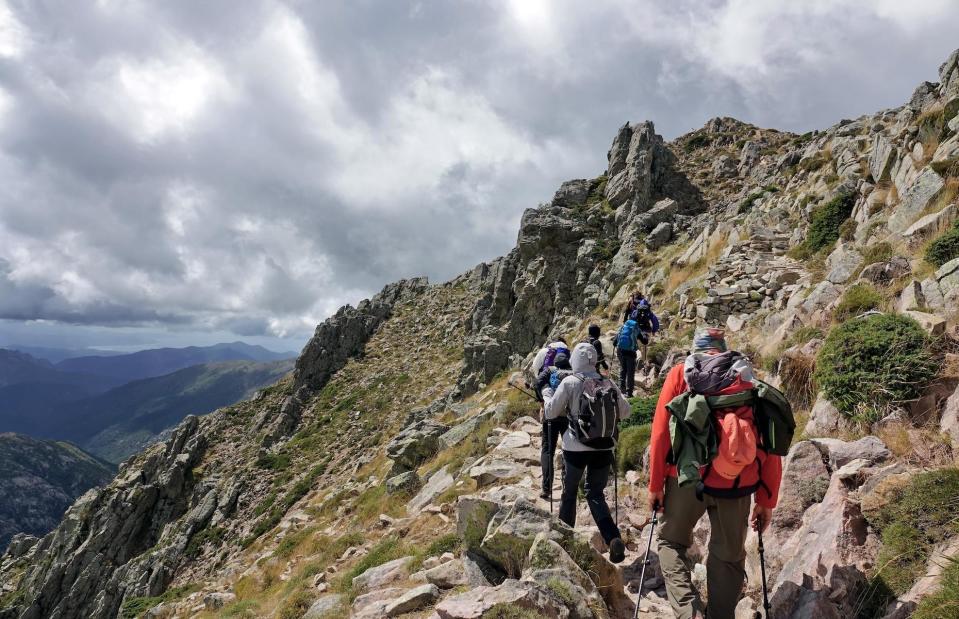
OUESTUSA/Shutterstock
For all its beauty though, it’s got a reputation for being tough for good reason. Taking between 14 and 16 days, hikers are vulnerable to exposure and exhaustion as they navigate through rough, rocky and often slippery terrain, with steep ascents, long exposed ridges and plunging descents.
The weather can change quickly on the trail, which only becomes accessible at the end of May for those without specialised alpine equipment. Even the hardiest of hikers confronts danger on this route, where landslides and extreme weather have led to fatalities.
6. Tatra Mountains, Slovakia

Borievky/Shutterstock
Part of the Carpathian Mountains, the Tatras stretch across the border of Slovakia and Poland. With its silver peaks, glacial lakes, dense forests and wildflower-strewn valleys, this is a truly stunning and little-visited part of Europe.
The Tatras are a UNESCO Biosphere Reserve and home to some of Europe’s most endangered creatures, including marmots, the Tatra chamois and European brown bears.
6. Tatra Mountains, Slovakia
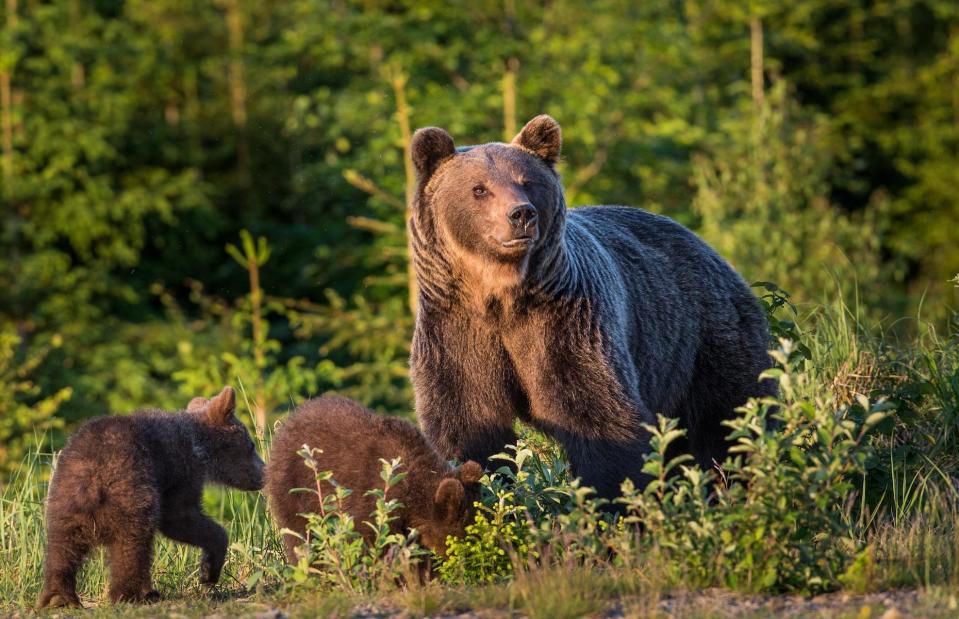
Patryk Kosmider/Shutterstock
Slovakia’s Low Tatras mountains are part of this unspoilt wilderness and home to around 130 bears, while there are more than 1,500 in wider Slovakia. With that comes some danger. Although attacks by the apex predators are far from common, there have been a number in Slovakia in recent years, including the first fatal attack in over 100 years in 2021.
In March 2024, a woman was chased by a bear and was later found dead – it's thought she fell into one of the area’s steep ravines after fleeing. A bear also attacked five people in the nearby village of Liptovsky Mikulas soon after.
5. Eiger, Switzerland
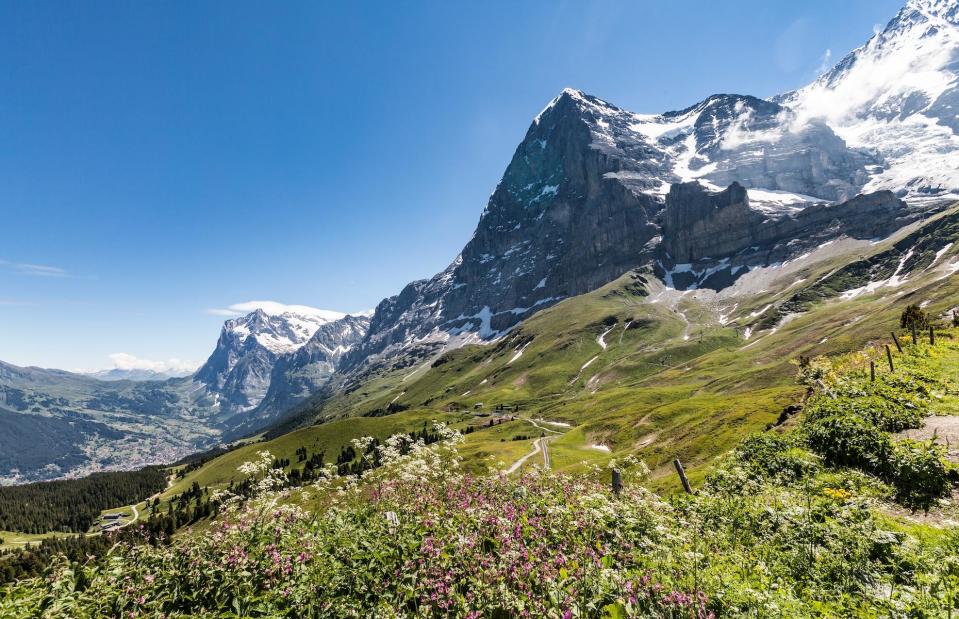
Umomos/Shutterstock
Towering over the ragged peaks, rippling glaciers and green valleys of Switzerland's Jungfrau region, the Eiger – along with its neighbouring behemoths, the Monch and Jungfrau – is among Switzerland’s most majestic and visited mountains. People come to hike, ski, climb and gaze at this soul-stirring scenery.
Some, however, want to get a little closer to the Eiger’s notoriously dangerous North Face.
5. Eiger, Switzerland
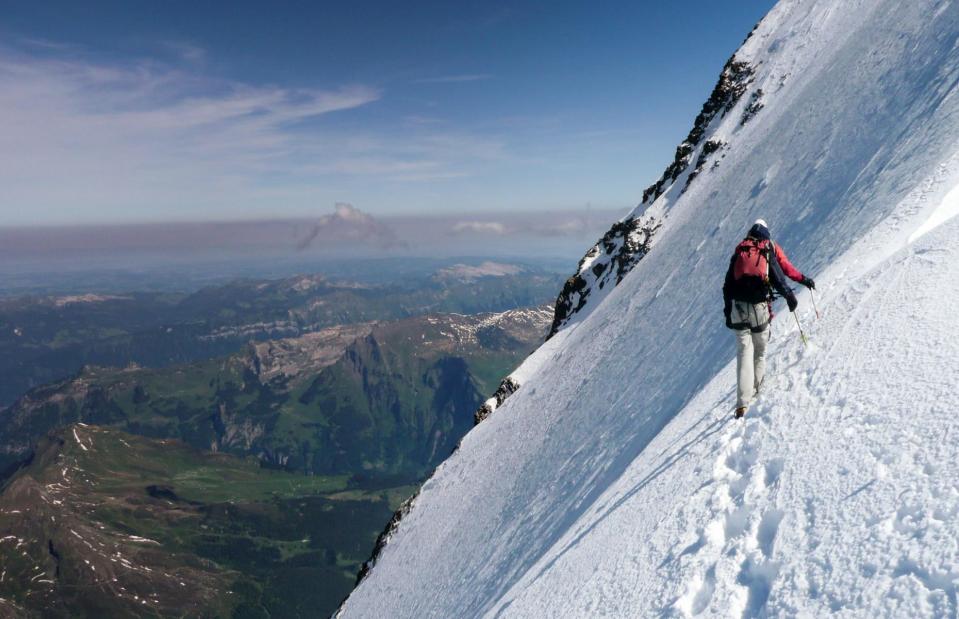
makasana photo/Shutterstock
Known as the ultimate challenge for mountaineers and dubbed the mordwand or 'murderous wall' by locals, the Eiger’s notoriously vertical North Face is the largest north-facing rock wall in the Alps. Rising up to almost 6,000 feet (1,829m), the imposing yet irresistible wall has claimed many lives since the first attempts to scale it in 1935.
The first expedition led to the deaths of six climbers, with two of the next party of four also perishing. To this day, more than 60 people have died on the wall. Because this black giant is in constant shade, it's always covered in ice and climbers also have to contend with difficult and loose rocks, along with the threat of rockslides and avalanches.
4. Mount Vesuvius, Italy
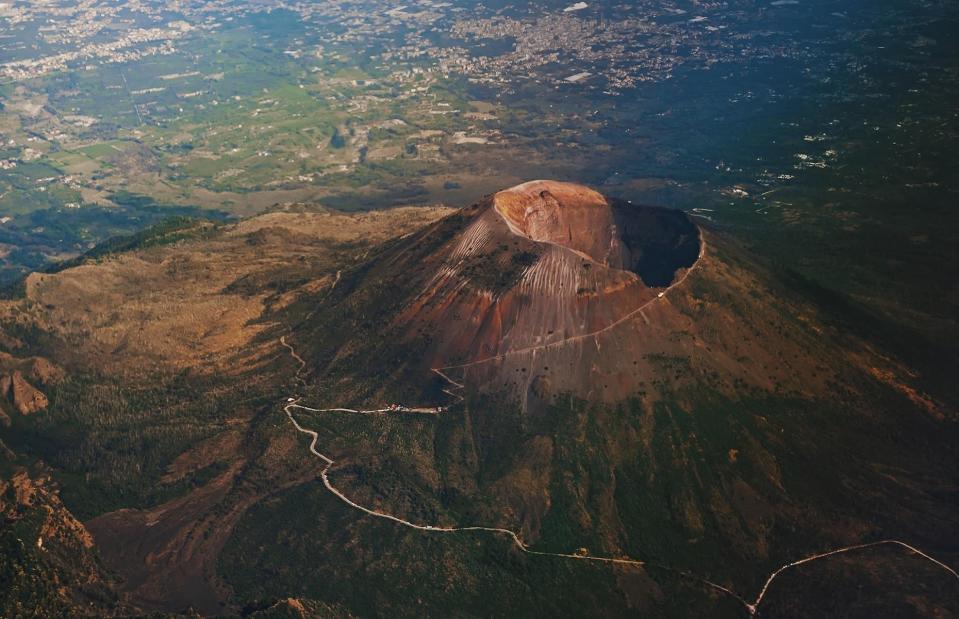
M-Production/Shutterstock
Arguably the world's most famous volcano, Vesuvius has been instilling fear and awe in humans for millennia. The active volcano, which looms large above the heavily populated Bay of Naples, is notorious for its deadly eruption in AD 79, which decimated the Roman cities of Pompeii and Herculaneum.
The volcano most recently erupted in 1944, a powerful eruption which created the yawning, sulphur-scented crater that now sits at its summit and can be peered into by visitors walking along the Great Cono track.
4. Mount Vesuvius, Italy

Arcady/Shutterstock
As with many of the world’s most dangerous attractions, people flock to the flanks of Vesuvius, lured by its combination of beauty and deadliness. Getting too close to the crater has led to accidents, including one American tourist who fell into the crater while taking a selfie, but it's the threat of another eruption or deadly gases that looms large.
When it does erupt, it will be catastrophic: Vesuvius is classified as a composite stratovolcano, with explosive eruptions and pyroclastic flows. It’s not just Vesuvius that the region has to fear when it comes to volcanic activity. The bay and its surroundings sit on a volcanic system known as the Phlegraean Fields, or Campi Flegrei, which is showing worrying signs of activity.
3. Trolltunga, Norway
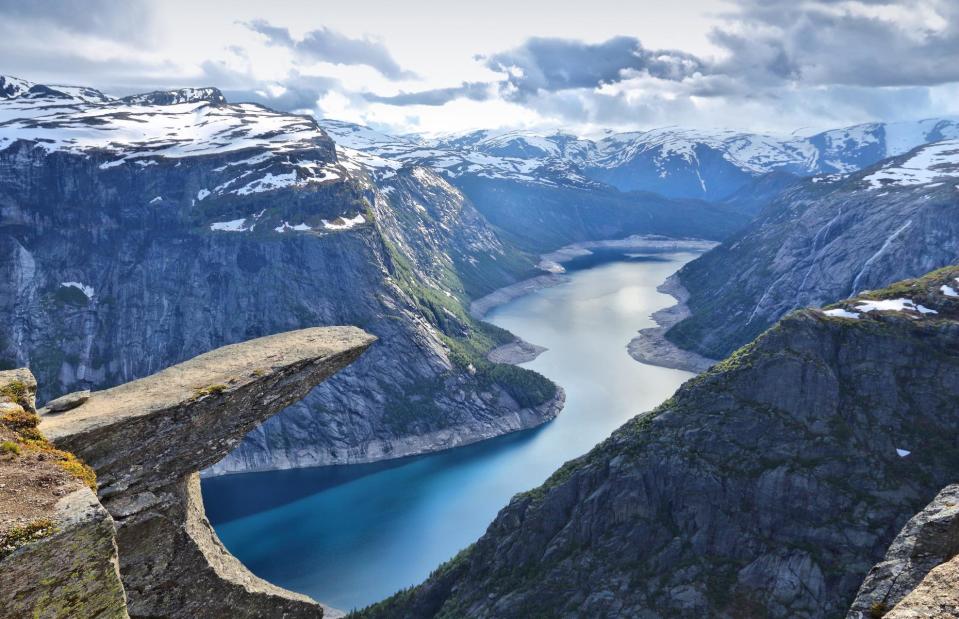
Tupungato/Shutterstock
You can well imagine trolls and giants stomping around the dramatic and ethereal landscapes of Vestland county in Norway, which is home to the famed Trolltunga (Troll's Tongue), a tongue-like rock formation that hangs above Ringedalsvatnet Lake. The isolated cliff is only accessible on a steep and long-distance climb – a guide is essential outside of the summer months – and a photograph on its vertiginous ledge is the ultimate goal for most people who manage the hike here.
It's no longer a hidden gem, however: the annual number of visitors has shot up from less than a thousand to more than 80,000 hikers per year.
3. Trolltunga, Norway
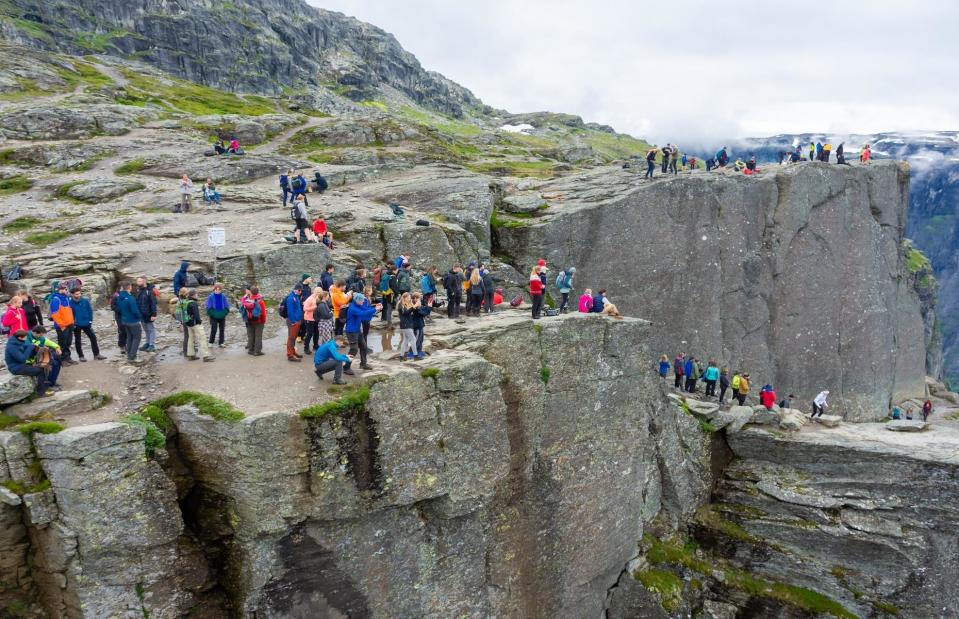
Stefano Zaccaria/Shutterstock
Proper walking footwear and clothes that adapt to the weather are important for anyone looking to complete the trail to see Trolltunga up close, as even in June there can be snowy patches up high. There are some steep spots that involve scrambling en route, but the views along the way and at the summit are transcendental.
At busy times of the year and day, hikers can stand in line for more than an hour to get the money shot of them standing (or sitting) right on the ledge. Although most people are aware of the dangers, the winds can quickly whip up at this lofty cliff-edge and tumbles can happen, whatever the weather. Tragically, one visitor lost her balance, slipped and had a fatal fall here while posing for a photograph in 2015.
2. Reynisfjara beach, Iceland

Smit/Shutterstock
Another otherworldly landscape in northern Europe, Iceland’s famous black beach, Reynisfjara, lures visitors with its bleak and bewitching beauty. As well as its raven-black sand, there are perfectly hexagonal basalt columns, smooth pebbles and jagged wave-pounded sea stacks at this beauty spot on the country’s unprotected south coast, where the North Atlantic crashes in.
People come to revel in the moodiness of the seascape as well as to spot the seabirds including puffins, fulmars and guillemots that nest on the unsupervised beach's sea stacks and cliffs.
2. Reynisfjara beach, Iceland
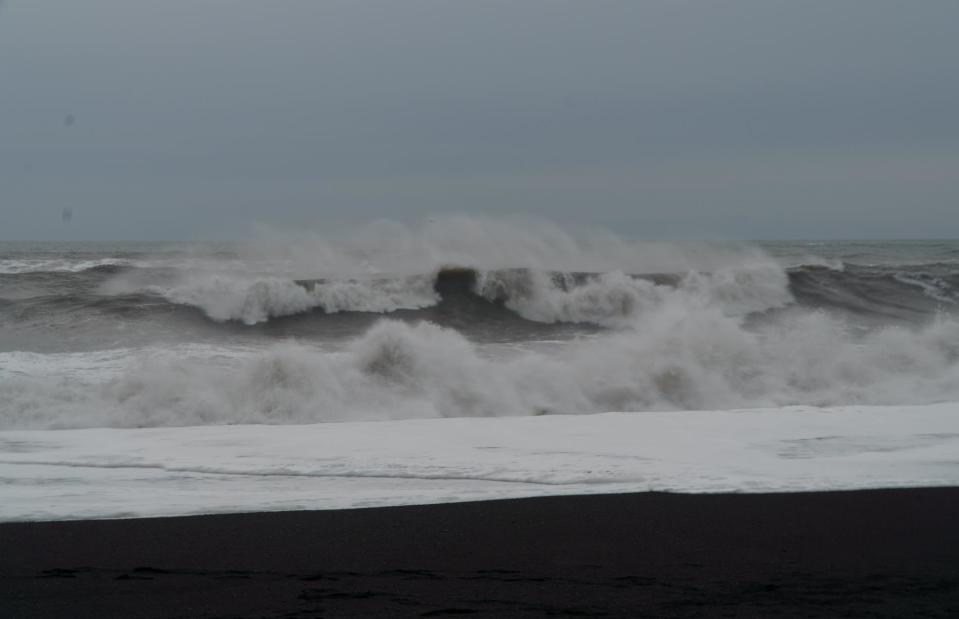
Darya Luganskaya/Shutterstock
With this beauty comes many dangers. There have been many drownings on the beach because of so-called sneaker waves: powerful breakers that can appear unexpectedly within a series of smaller waves. Add to that frigid temperatures and strong ocean currents and going in the water is extremely ill-advised.
So too is turning your back on the waves to capture a selfie. Signs warn beach walkers to keep a safe distance of at least 100 feet (30m) from the shore during their visit. The same applies to the cliffs, with rockfalls and rockslides common. A zone system operates on the beach with coloured lights to indicate when areas are off limits as rescue attempts are simply too high risk.
1. Cliffs of Moher, Ireland
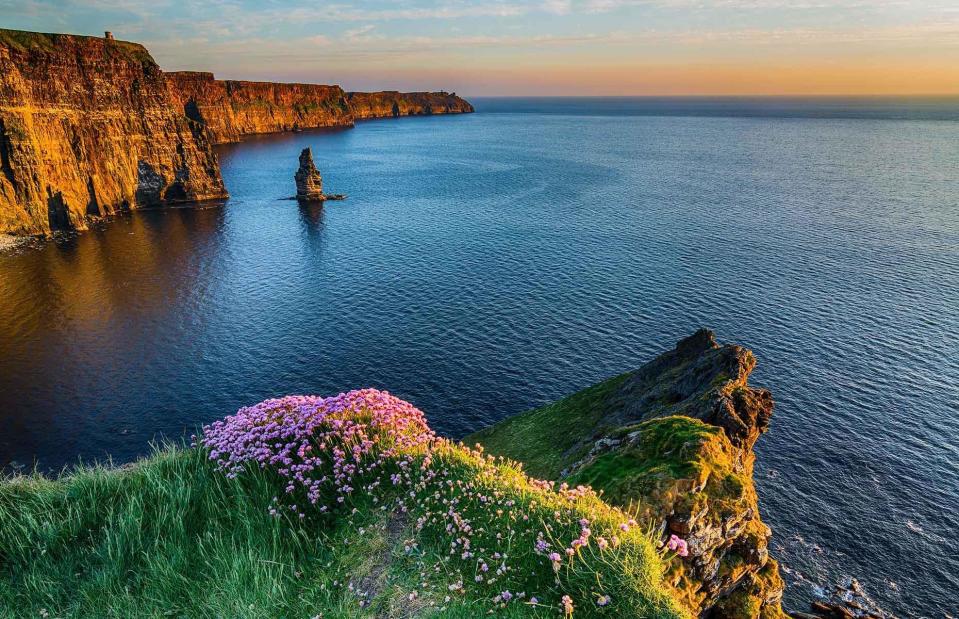
shutterupeire/Shutterstock
Wildly beautiful, but often deadly, the Cliffs of Moher is in our number one spot. Sheer-faced and wave-bashed they are among the steepest sea cliffs in the world. Measuring 702 feet (214m) at their highest point and stretching for five miles (8km), they offer arresting views of soaring sea stacks, Galway Bay and the Aran Islands.
This area is also designated a Special Protection Area (SPA) for Birds and the cliffs’ South Platform is one of the best places to see the puffin colony of Goat Island.
1. Cliffs of Moher, Ireland
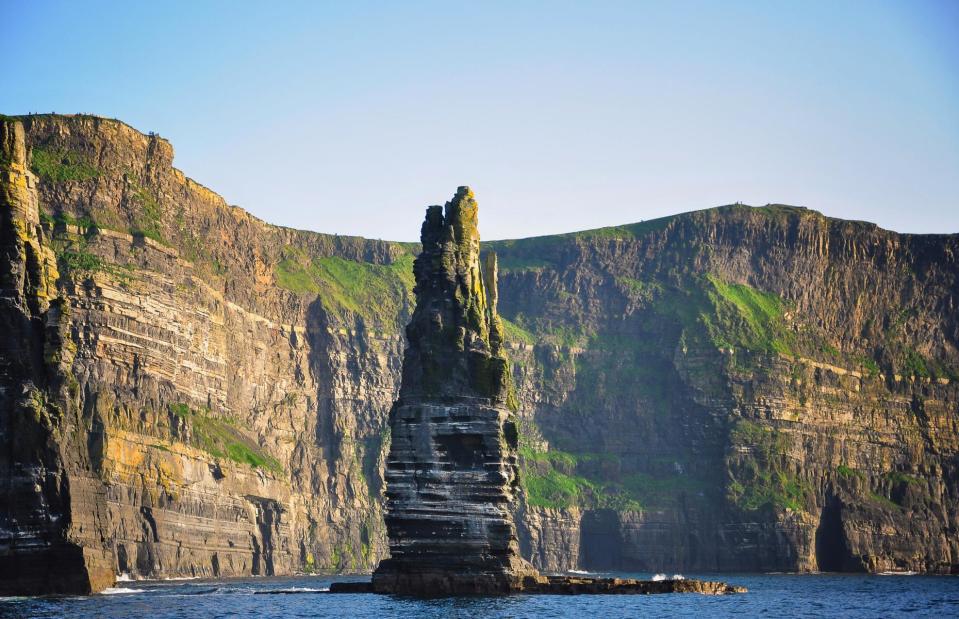
svetok30/Shutterstock
This vertiginous beauty spot on the craggy West Clare coast – and a key stop along Ireland’s famous Wild Atlantic Way – is also an accident hotspot. Over 60 fatalities have been recorded here since the beginning of the 1990s. In 2019, a student fell off the edge of the cliff after witnesses saw him taking a number of selfies and a woman died after falling in 2024.
Along with the high risk of slipping, the cliff is unstable, with rockfalls a constant peril.


